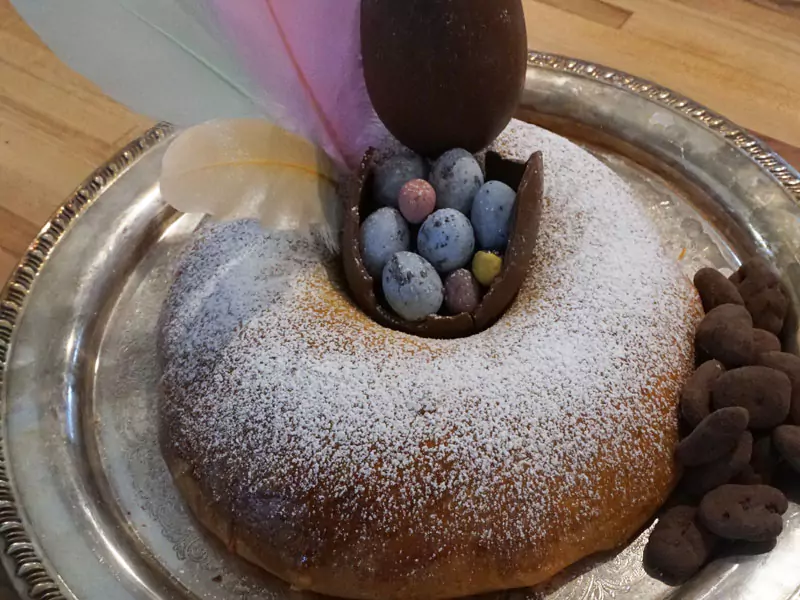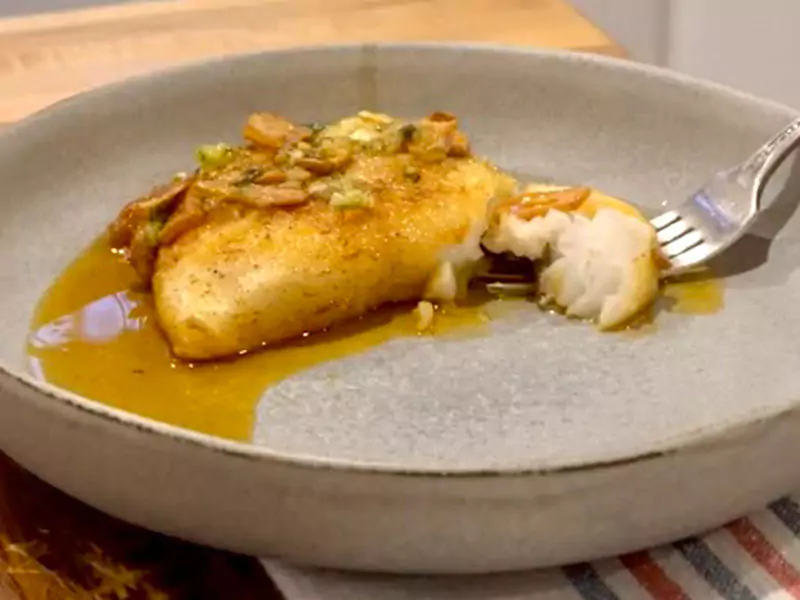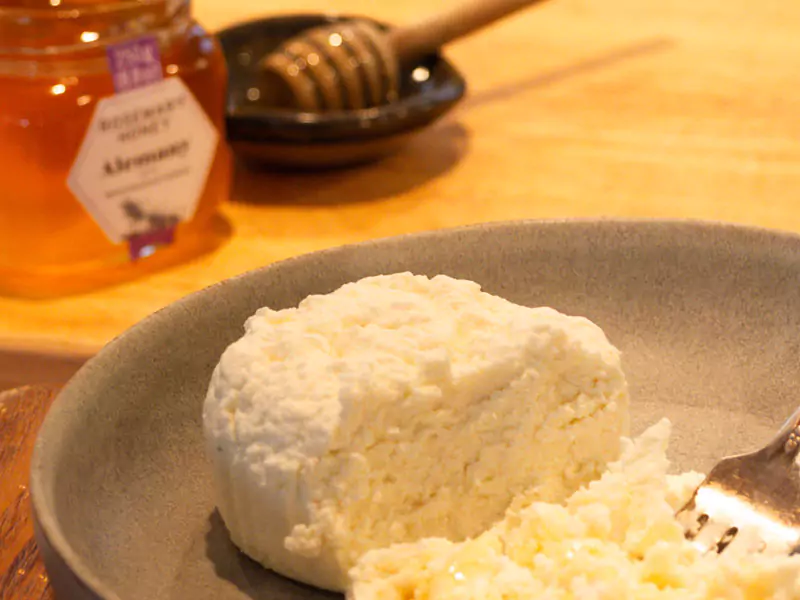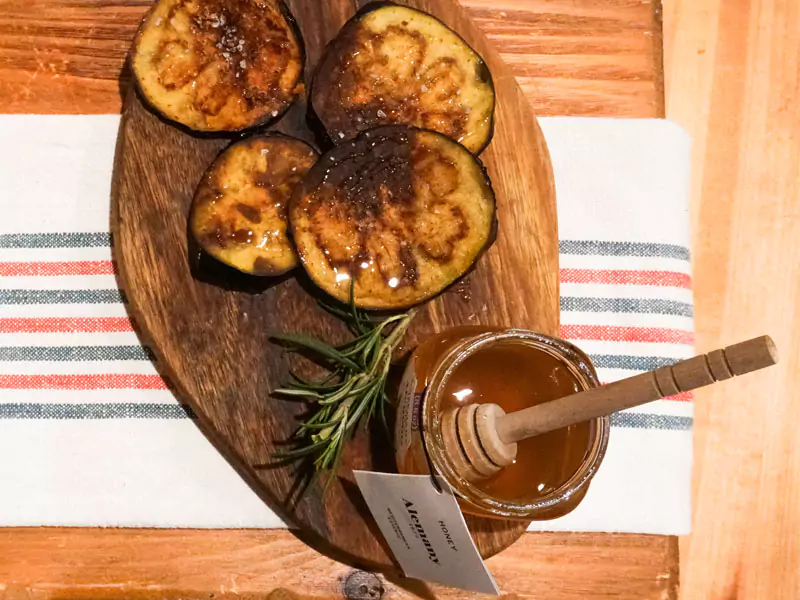La Mona de Pasqua
Traditional Catalan Easter mones—ring-shaped, made of bread dough, and decorated with hard boiled eggs—were first prepared in farmhouse kitchens, then taken to the village oven to be baked. The village baker would also fashion his own versions, giving the mones different shapes according to the number of eggs used , including that of a bird, a chicken, or, if using twelve eggs, a boat. More modern mones started appearing in pastry shops around the second half of the nineteenth century, wiping out traditional bread monas in favor of cakes. Some took the shape of a bouquet with figurines on top, but at first, the figures were often monkeys, which only strengthened the meaning behind the sweet’s name (“mono” means “monkey”). The cake, however, appears to get its name from the Arabic term “mona,” referring to a gift or present, which was carried over into Latin as “monus,” and then transformed into a pastry or coca that symbolized a present and entered Catalan households as a Christian custom. Nowadays, patisserie chefs often make the Easter cakes that grace Catalan tables, and there’s no shortage of variety. The chocolate figures on top often represent popular characters of the moment, but classic versions with chocolate eggs and colored feathers are still available.
TRADITIONS
MONES, GODPARENTS, AND GODCHILDREN
According to Catalan tradition, godparents give their godchild a mona with as many eggs as the child is old, from their second birthday until their twelfth, when they celebrate their First Communion.
On Easter Sunday, godchildren dress up in their best Sunday clothes and go to their godparents’ house to receive their cakes. In the past, when the children arrived, they would sing: “Déu vos guard, padrí; la Pasqua ha vingut; doneu-me la mona, i Déu us dò salut” (May God keep you, godparent; Easter has arrived; give me my mona, and God will give you a long life). Children without godparents still take part in the fun, as their aunts, uncles, or parents purchase them Easter cakes instead.



